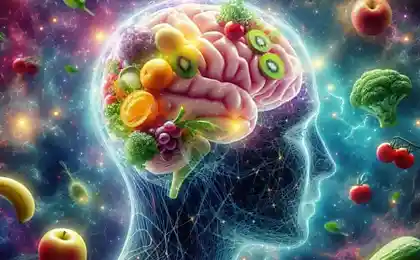777
The brain of modern man reacts to smile now as a smiling face
:-) Lot govorit
The brain is perfectly capable of distinguishing facial expressions when you look at the face of another person or his own reflection in the mirror, are activated by certain areas of the cerebral cortex - at the back and on the sides. But Australian researcher Owen Charchezu after some students wrote letters to him with various requests such retake at the end of the letter put the symbol :-) came to mind the question, how the brain reacts to emoticons.

Then Charchez conducted an experiment: He measured the electrical activity in the brain of 20 participants (maybe some of the volunteers were students, are asked to re-take?). He showed them the real photos of human faces, emoticons, and just arbitrary punctuation: when subjects saw emoticons like :-), they activated the same brain regions as in the form of human faces.
Interestingly, when the same emoticons were overturned, such as (- :, they do not cause the same reaction, and the subjects reacted to them just as punctuation. As for real human persons, the subjects reacted to them is always the same, even when the faces were flipped.
Smiley face for the first time was used in 1982 by Scott Falmanom scientists from Carnegie Mellon University. Charchez explained that the innate neural response to the smiles of people there - in infants it is not observed. Until 1982, the symbol :-) any areas of the cerebral cortex is not activated, but now we know what it means, and our brain reacts to it accordingly.

Smiling smiley perceived that way because now this sequence of characters considered as a stylized human face: the colon is the eyes, the dash - the nose, and the parenthesis - smiling lips. As far as this reaction is valid for other emoticons can only guess.
via factroom.ru

The brain is perfectly capable of distinguishing facial expressions when you look at the face of another person or his own reflection in the mirror, are activated by certain areas of the cerebral cortex - at the back and on the sides. But Australian researcher Owen Charchezu after some students wrote letters to him with various requests such retake at the end of the letter put the symbol :-) came to mind the question, how the brain reacts to emoticons.

Then Charchez conducted an experiment: He measured the electrical activity in the brain of 20 participants (maybe some of the volunteers were students, are asked to re-take?). He showed them the real photos of human faces, emoticons, and just arbitrary punctuation: when subjects saw emoticons like :-), they activated the same brain regions as in the form of human faces.
Interestingly, when the same emoticons were overturned, such as (- :, they do not cause the same reaction, and the subjects reacted to them just as punctuation. As for real human persons, the subjects reacted to them is always the same, even when the faces were flipped.
Smiley face for the first time was used in 1982 by Scott Falmanom scientists from Carnegie Mellon University. Charchez explained that the innate neural response to the smiles of people there - in infants it is not observed. Until 1982, the symbol :-) any areas of the cerebral cortex is not activated, but now we know what it means, and our brain reacts to it accordingly.

Smiling smiley perceived that way because now this sequence of characters considered as a stylized human face: the colon is the eyes, the dash - the nose, and the parenthesis - smiling lips. As far as this reaction is valid for other emoticons can only guess.
via factroom.ru
10 most significant "scars" left on the evolution of the human body
Tolkien was planning to write a fourth novel series "The Lord of the Rings", there is even a rough draft of 13 pages























